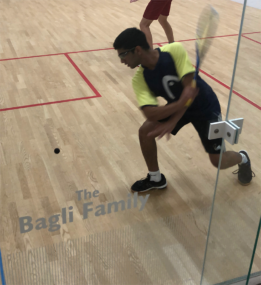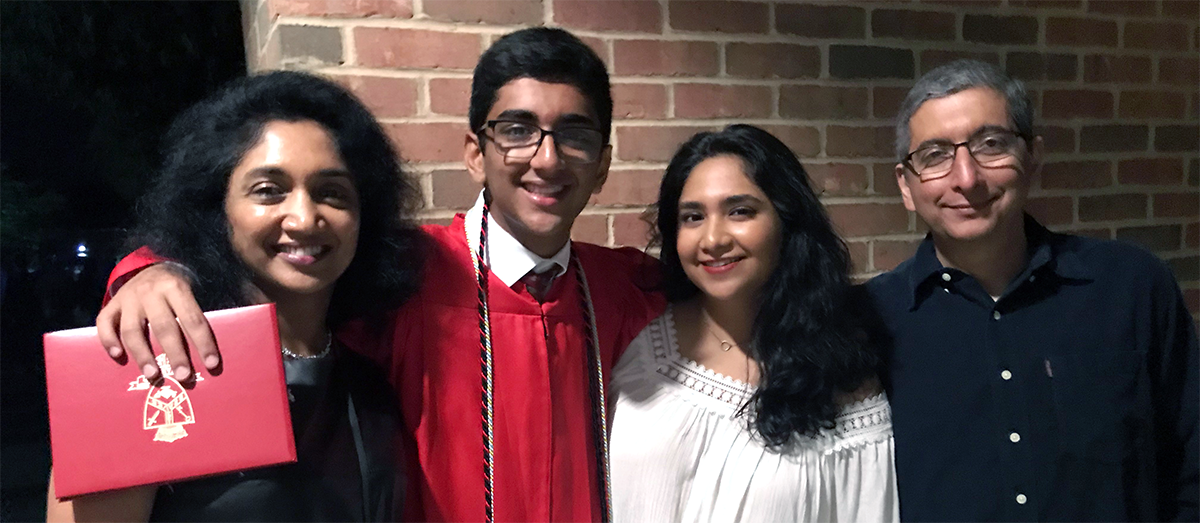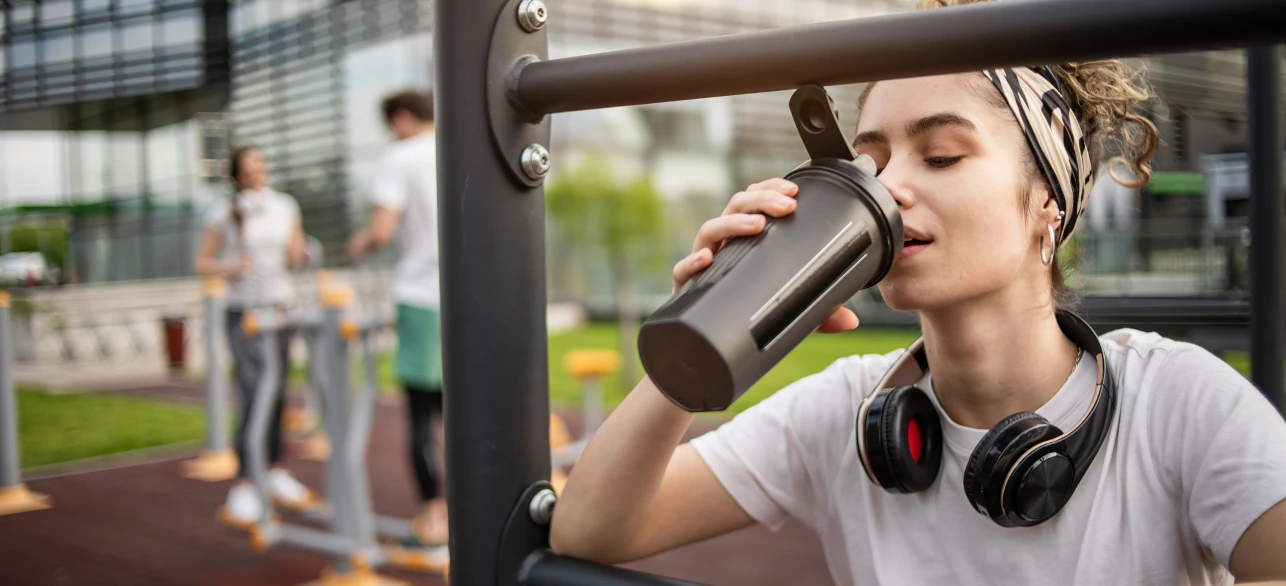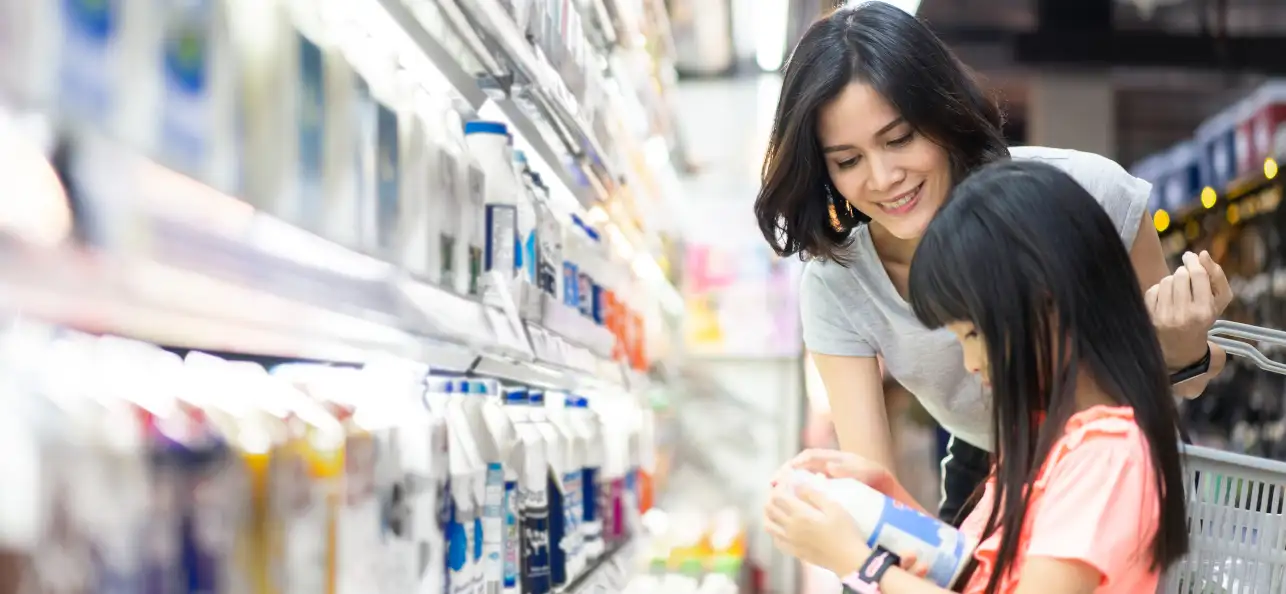Houston, you have a problem
As a top 50, nationally-ranked squash player, fitness and endurance have been a key part of my life. However, during an important squash tournament in July 2016, I started feeling short of breath, fatigued and had muscle soreness. Except for an occasional stomach bug, I never fell ill. So, this was a surprise. Thus started a three-year search for the cause of my symptoms.
Wrong turns and surprises
During July-December 2016, I was tested, diagnosed and treated for first extreme dehydration, then exercise-induced asthma, and finally for vocal cord dysfunction. By December’s end, as none of these treatments worked and my condition worsened, we reached out to our family doctor in India who suggested a few blood tests. And viola, we had a cause! I had iron deficiency anemia! In all these months, neither my pediatrician or any of the specialists had ordered a blood test! I was immediately referred to Cincinnati Children’s Hematology Department. I had a hemoglobin level of 7.3 (normal is 14-16) and a ferritin count of 0.9 ng/ML, the lowest ferritin count the doctors there had ever seen.
The Diagnosis – Autoimmune What?
Now came the next challenge. Why did I, a normal teenager on a healthy diet, have iron deficiency anemia? It took another five months, several tests and visits to Cincinnati Children’s Gastroenterology Department and Inflammatory Bowel Disease (IBD) program to diagnose that I had Crohn’s disease. It was difficult to diagnose as I did not exhibit any Crohn’s symptoms. Doctors checked my gut through a camera endoscopy and found ulcers in my small intestines that indicated Crohn’s. The bleeding caused by ulcers depleted my iron levels, while the inflammation from the ulcers prevented me from absorbing nutrients and minerals consumed orally, including iron.
The Remedy – Medications?
In the United States, first level treatments for Crohn’s disease typically involve steroids, or immunosuppressant drugs like Humira. I was first on Humira, an injection that I had to administer myself bi-weekly and that renders patients more susceptible to infectious diseases. Unfortunately, Humira did not heal my ulcers. I also developed antibodies to Humira within five months and had to stop Humira. We then tried steroids for three months. Neither of these treatments healed my ulcers, and I lost another 18 months testing these treatments.
My Savior – The Iron I.V.
For almost 2 years while we waited for the various treatments to work, I had to get my iron levels up so I could play squash and maintain my ranking. As oral iron was ineffective, I had to get it intravenously (I.V.) through blood transfusion. From February 2017 to December 2018, I received 13 I.V. iron transfusions, a half day event at Cincinnati Children’s hospital. This was not fun!
The Remedy – A Diet!! Really?
In December 2018, my doctor recommended the exclusive enteral nutrition (EEN) diet. I had to drink a minimum of 3,000 calories in pre-formulated meal replacement drinks, and nothing else, except water, for eight weeks. I had avoided this treatment path so far. However, it was now December 2018, thirty months since I first noticed the problem. As a high school senior and soon headed to college to play varsity sports, I needed to get this under control. I had to take on this challenge.
Taking On The Diet: Cravings!
On January 5th, 2019, after a lovely vacation in Mexico and gorging myself on great Mexican food, I started my diet. I chose the Ensure brand sold by Abbott labs. The first two weeks were extremely difficult. I was craving salty and/or fried foods. It hit me every time I saw an advertisement, a friend eating junk food, and even my mom eating her simple meals! One day my cravings got so bad that I got McDonald’s four piece chicken nuggets, chewed and spat them out, making sure I did not swallow.
After this episode I made some quick changes. I blocked every Instagram and other social media that might have food pictures. No more school lunch room visits and post-game hangouts at Skyline. I learned that my cravings reduced if I remained semi-full, so I was never without some extras. Further, keeping busy was the key to thinking less about food. I was determined to stick to the diet as I desperately wanted my ulcers to heal.
It takes a Village!
My family was a big help. They avoided eating in front of me and kept our home snack free. My mom completed her cooking while I was at school and then febrezed the house. My school friends and teachers built me up by letting me know how strong I was being, and by just letting me miss lunch time in the cafeteria and the hangouts.
The Silver Lining
After a few weeks, I got used to the diet and soon started liking some aspects of it. I felt lighter and healthier. I suddenly had more time in my schedule, which I used to work on squash and fitness. During the two months of the diet, I felt better and better, physically as well as mentally. My muscles stopped aching, and I stopped feeling as if something was holding my body down.
The Results
After two months and another capsule endoscopy, I received the great news I was hoping for! My one large ulcer had shrunk to a small size, and all others had healed. I was delighted as I had succeeded in a very difficult task. The hospital nutritionist congratulated me for successfully completing the eight weeks of EEN diet.
EEN as the First Line of treatment for IBD
My doctor informed me that EEN is usually the first line of treatment given to people diagnosed with Crohn’s disease in Europe. According to a publication by US National Library of Medicine and National Institutes of Health, “the EEN diet is able to induce remission in 80% of Crohn’s Disease patients”. The diet does this by causing changes in the gut microbiome. That said, I appreciate that it’s not a standalone solution. I am now on medication to keep me in remission.
The Personal and Social impact of the diet

Socially, this was a difficult period of my life as I missed many hangouts and group activities involving food. However, personally this was a high growth phase. I learned that I had the strength to stick to a diet that many adults have failed to stay on. Most of the testing and I.V. infusions were during my junior year, a challenging year for anyone. I had to balance my tough academic schedule, prep for ACT/SAT tests, my critical squash season and the numerous doctor visits, while feeling fatigued with a low hemoglobin.
Feeling a strong sense of achievement, I maintained a 4.0 GPA through high school, kept up my ranking in squash, and got recruited by George Washington University into their squash program. I learned first-hand about the healing power of the right foods and have started making healthier food choices.
The Way Forward
Dietary pathways to solving health problems, such as EEN, should be a high priority in medical research. My mission is to tell my story to others and to create awareness about dietary options for treatment so that it is considered as a first option rather than the last resort. If I as a teenager can do it, and stick with it, others can do it too.
To learn more about the Inflammatory Bowel Disease Program at Cincinnati Children’s, please call 513-636-4415 or fill out an online form for more information.





